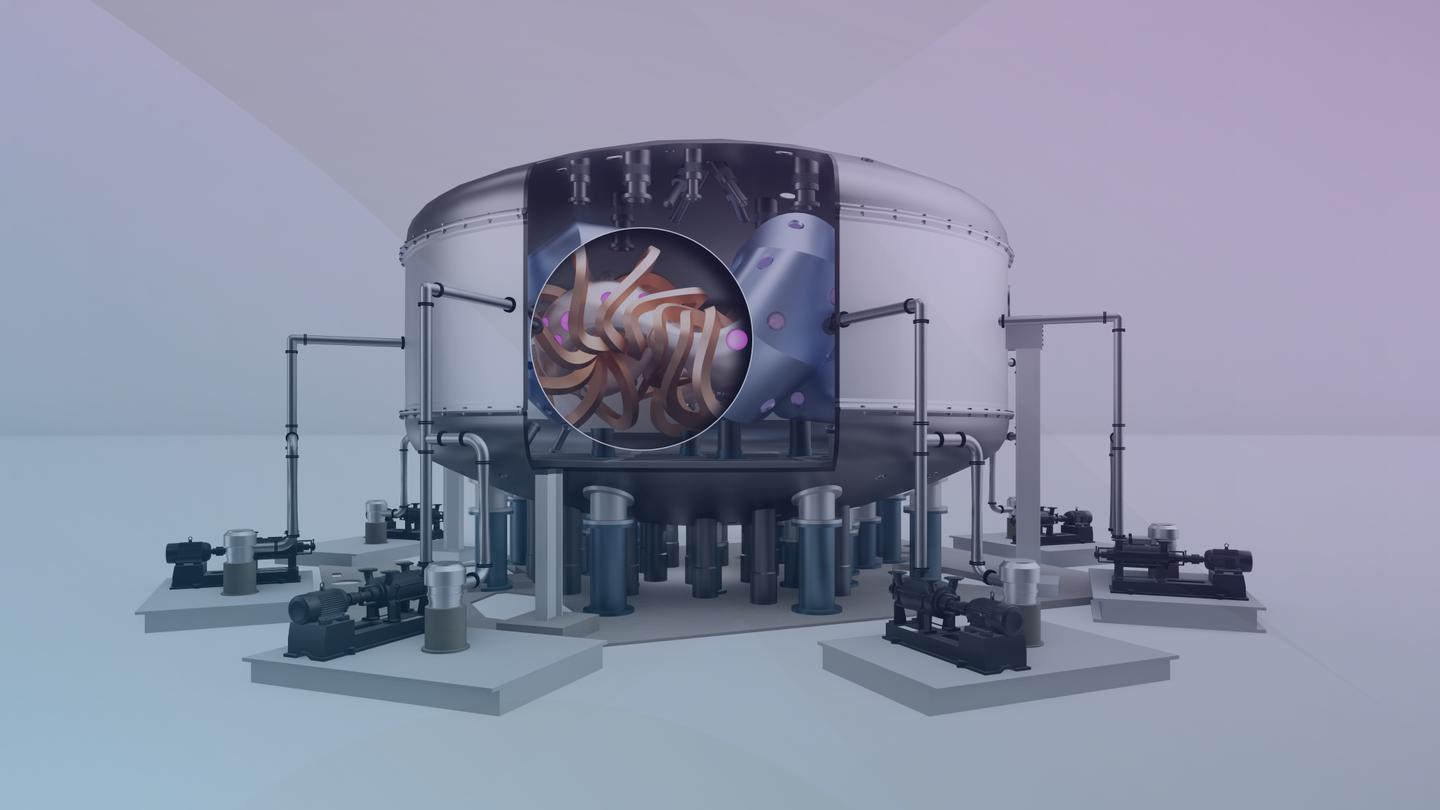New stellarator brings commercial fusion power one step closer
As the climate crisis worsens and energy needs grow, scientists are racing to unlock a cleaner and safer energy future.

Conceptual Design for Infinity One perspective match 6. (CREDIT: Type One Energy)
As the climate crisis worsens and energy needs grow, scientists are racing to unlock a cleaner and safer energy future. Among the most promising solutions is nuclear fusion—an energy source that could one day power the world without releasing carbon or creating long-term radioactive waste. But fusion is hard to achieve. It demands extreme conditions, precise control, and technology that must meet tough, often conflicting, demands.
That’s why a recent breakthrough is catching attention. Type One Energy, a private company focused on fusion, has developed a detailed, self-consistent scientific blueprint for a practical fusion pilot power plant.
Their findings, now published in six peer-reviewed papers in the Journal of Plasma Physics (JPP), lay the foundation for a pilot facility that could bring fusion energy closer to the power grid.
The special issue of the journal is more than just academic. It shows how science, engineering, and global collaboration can work together to design energy systems that meet real-world needs.
A new blueprint for fusion
The work centers on a device called a stellarator—a complex machine that uses twisted, helical magnetic fields to control the super-hot plasma needed for fusion reactions. The idea is not new. In fact, the Wendelstein 7-X in Germany, the world’s largest stellarator, has already proven the design can work at a research scale.
What’s different now is the scale and purpose. Type One Energy’s new design aims to go beyond science experiments and towards energy production. Their physics plan is built on the real challenges of building a fusion power plant that could one day plug into the grid.
According to Christofer Mowry, the company’s CEO, this isn’t just another laboratory concept. “The physics basis for our new fusion power plant is grounded in Type One Energy’s expert knowledge about reliable, economic, electrical generation for the power grid,” Mowry said. “We have an organisation that understands this isn’t only about designing a science project.”
Related Stories
The project, called Infinity Two, is being developed in partnership with the Tennessee Valley Authority, a large public utility in the United States. That partnership reflects the focus on real-world impact and commercial potential, not just theory.
Tested by the scientific community
To ensure scientific rigor, Type One Energy didn’t go it alone. The company worked with researchers from national labs and top universities, including support from the U.S. Department of Energy. Supercomputers like the Frontier machine at Oak Ridge National Laboratory were used to run high-fidelity simulations of how plasma behaves inside the stellarator.
This effort paid off. The resulting six papers form a detailed and reliable physics foundation for the pilot plant. They cover key challenges such as maintaining plasma stability, reducing energy loss, and improving performance. The authors also explored how different design features interact, helping researchers better understand how to balance these complex factors in a functioning reactor.
Chris Hegna, a physicist from Type One Energy and guest co-editor of the journal issue, described the goal of the work: “The aim of this work is to use state-of-the-art stellarator optimization and high fidelity computational predictions of the plasma performance to substantially improve confidence in the stellarator as a vehicle for magnetic fusion energy.”
That confidence matters. For years, fusion has been a field full of promise but short on practical delivery. The hope is that with rigorous modeling, better designs, and real utility partnerships, fusion can finally take a step from theory to reality.
Raising the bar for fusion science
Cambridge University Press, is known for its rigorous standards. Its editors view this collection of papers as a landmark moment for the field. Alex Schekochihin, a professor at the University of Oxford and editor of the journal, highlighted the importance of public and peer-reviewed fusion research.
“Fusion science and technology are experiencing a period of very rapid development,” Schekochihin said. “In this environment of creative and entrepreneurial ferment, it is crucial that new ideas and designs are both publicly shared and thoroughly scrutinised by the scientific community — Type One Energy and JPP are setting the gold standard for how this is done.”
He pointed to a similar moment five years ago, when the journal published the foundational physics for another fusion device, SPARC, developed by Commonwealth Fusion Systems. That work helped energize a new wave of investment and interest in fusion. Now, with Infinity Two, the momentum continues.
Per Helander, associate editor of the journal and a physicist at the Max Planck Institute for Plasma Physics in Germany, echoed this excitement. “The articles in this issue represent an important step towards a fusion reactor based on the stellarator concept,” Helander said. “It has become possible to lay out the physics basis for a stellarator power plant in considerable detail.”
Why stellarators could lead the way
Stellarators differ from the more common tokamak fusion devices in one important way. While tokamaks rely on powerful electric currents inside the plasma to help control it, stellarators use external magnetic coils. That design can be more stable and continuous, which could make stellarators better suited for power plants that run for long periods.
However, the complex shapes needed for the magnetic coils have made stellarators harder to build and simulate. That’s why access to advanced supercomputers and deep theoretical modeling is so important. Type One Energy’s work shows that, with the right tools and partnerships, the stellarator path to fusion energy may be more promising than ever before.
This isn’t just a technical win. It’s a symbol of what’s possible when public institutions, academic researchers, and private companies work together with shared goals and open science.
As Hegna put it, “With this achievement, we definitively advance Type One Energy's objective of realizing fusion energy production using the stellarator concept.”
Powering the planet’s future
As the world shifts away from fossil fuels, new forms of energy must rise to take their place. Fusion offers an answer that’s clean, safe, and incredibly powerful. But getting there has taken decades of work, with plenty of trial and error.
This new blueprint marks an important step forward. It reflects not only strong science, but also the growing maturity of the fusion energy field. With enough effort and support, fusion may soon become a true part of the global energy mix.
For now, the six papers serve as a strong signal to the scientific community: the tools to build a better energy future are coming together. The next challenge will be turning those blueprints into reality.
Note: The article above provided above by The Brighter Side of News.
Like these kind of feel good stories? Get The Brighter Side of News' newsletter.
Joshua Shavit
Science & Technology Writer | AI and Robotics Reporter
Joshua Shavit is a Los Angeles-based science and technology writer with a passion for exploring the breakthroughs shaping the future. As a contributor to The Brighter Side of News, he focuses on positive and transformative advancements in AI, technology, physics, engineering, robotics and space science. Joshua is currently working towards a Bachelor of Science in Business Administration at the University of California, Berkeley. He combines his academic background with a talent for storytelling, making complex scientific discoveries engaging and accessible. His work highlights the innovators behind the ideas, bringing readers closer to the people driving progress.



